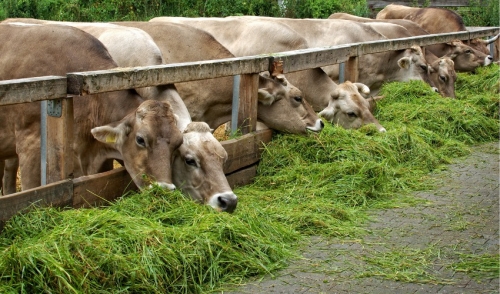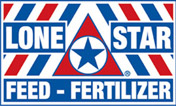
Treatment and Symptoms of Grass Tetany in Cattle
Pastures of succulent new grass look inviting to cattle in the springtime, but they can pose the threat of grass tetany (also called grass staggers, hypomagnesemia or wheat pasture poisoning).
Grass tetany is a serious, often fatal, metabolic disorder caused by an imbalance of minerals (forage with too little magnesium and too much potassium, nitrogen and protein, along with the animal having deficiencies in magnesium and calcium). Some cows seem to carry a predisposition to grass tetany. Even so, there are sound preventative measures that can be taken (described below).
Symptoms
Older, lactating cows (often the best cows in the herd) are most likely to get grass tetany, although young or dry cows or growing calves also can be affected. The symptoms include an uncoordinated gait, nervousness, muscle spasms, staggering, decreased milk yield, and twitching skin. Ultimately, the cow may experience convulsions, fall into a coma, and die. Cows with grass tetany that cannot be observed easily may be found dead in the pasture, seemingly without having had any illness.
Causes
New grass growth in the spring (or fall) is naturally low in magnesium. A heavy application of fertilizer or manure on the pasture can give forage high concentrations of nitrogen and potassium. In addition, the content of the soil in specific regions of the country also can pose a problem.
Cows need to get approximately 30 grams of magnesium daily. A deficiency of this mineral not only can result in grass tetany, but also other problems, such as lower calving rates, lameness or stiffness, reduced weaning weights, and smaller, weaker calves.
Cows grazing on new forage will not get sufficient magnesium from this lush grass, and need mineral supplementation.
Preventative Measures
There are several steps that can be taken to ensure cattle get sufficient quantities of magnesium daily, such as using a high-magnesium fertilizer, injecting hay bales with magnesium, or adding legumes to pastures. Careful pasture management practices can also help. Graze animals that are less susceptible to grass tetany (steers, heifers, or cows with calves more than four months old) on the higher-risk pastures. You can also treat pastures with dolomite or high-magnesium limestone.
But, perhaps, the most reliable way to ensure cows are well-protected against grass tetany is to boost their concentrations of magnesium 30 days prior to turnout. Purina MillsÅf Wind and Rain high-magnesium family of products is ideal for this purpose. There are several different products, so consult with your Purina dealer or representative to see which one best suits the particular needs of your herd and pasture. Purina MillsÅf magnesium supplements are highly palatable and have added selenium for selenium-deficient soils.
Helpful Tip
Mineral supplements and pasture preparation are measures that require more lead time (at least 30 days). For a cow in the first few hours of grass tetany symptoms, a more immediate step is needed. An injection of magnesium sulfate (Epsom salts) under the skin (up to 200 cc, with no more than 50 cc at one injection site) can help stabilize the animal. Affected cows should continue to be provided 30 grams of magnesium daily for one to two weeks after this treatment.


